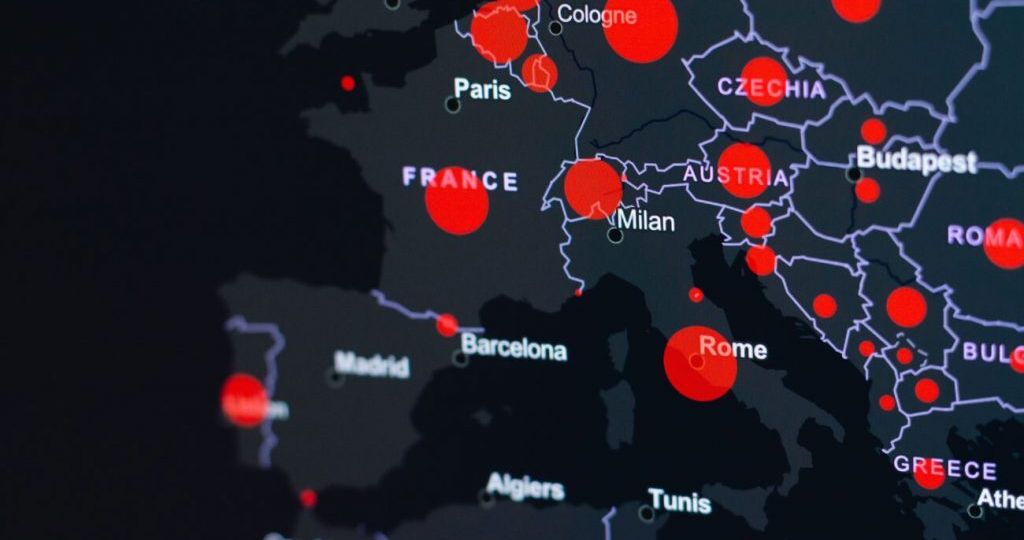An analysis based on the briefs on disinformation of the EDMO fact-checking network. Organizations that contributed: AFP, Correctiv, Delfi, Demagog, DPA, EFE Verifica, Ellinika Hoaxes, Facta, France tv, Knack, Maldita, Mimikama, Newtral, Ostro, Pagella Politica, Polígrafo, Surligneurs, The Journal FactCheck, Verificat, VerificaRTVE
This article is the English translation of the original “Pandemia e infodemia: ondate parallele? sette mesi di fact-checking europeo”, published by Facta on13 January 2022.
As of the end of 2021, the network of fact-checking organizations part of the European digital media observatory (EDMO) is composed of 20 members that monitor and combat disinformation in 23 European countries out of 27*. In July 2021 EDMO started publishing monthly briefs about disinformation in the EU.The briefs depict disinformation as observed by the participating organizations in the month preceding the publication and reported through a specific questionnaire. The last brief about disinformation in December 2021 – of which we’ll anticipate some points in this post – will be published on 17 January 2022.
We have analyzed all the published briefs looking for potential patterns that emerge from the analyses of the whole June-December 2021 timeframe, in order to understand what we can expect for the coming future.
*Denmark, Sweden, Malta, and Cyprus are not currently represented
Disinformation and infections in the European Union
The first information provided by EDMO’s fact-checking organizations through the questionnaire are related to the total number of articles published during the timeframe considered and the percentage of those that have to do with Covid-19. Thanks to this data we can assess the weight of pandemic-related disinformation out of the overall amount of observed disinformation.
In this chart we aggregated the shares of pandemic-related disinformation out of the total disinformation reported every month between June and December 2021.
Comparing the share of Covid-19 disinformation out of the overall observed disinformation with the trend of infections in the European Union allows to highlight a revealing match between the two factors, with a time lag of approximately one month.
In other words: about one month after the number of Covid-19 cases started to rise in the EU, disinformation about Covid-19 also started growing.
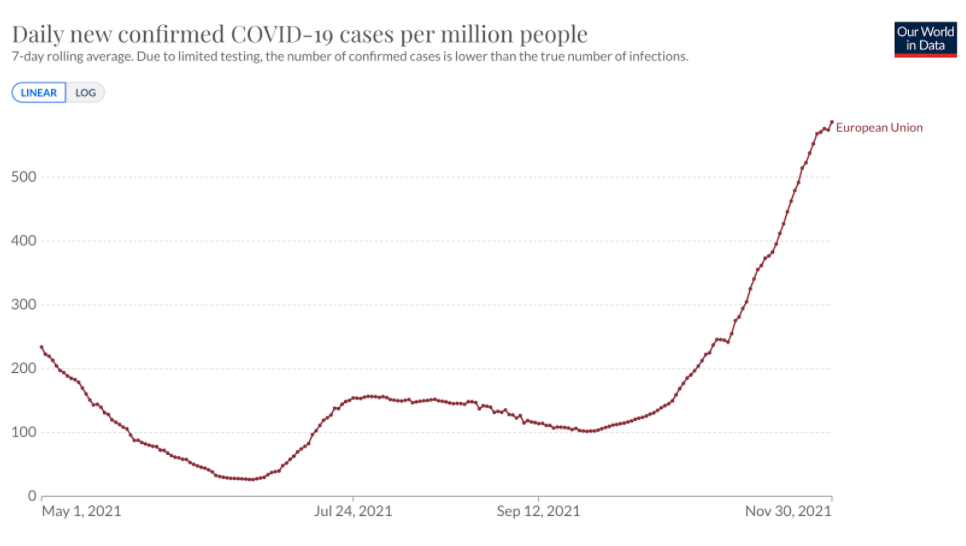
Considering the steep rise in Covid-19 cases witnessed in Europe in December 2021, we can expect that in the February 2022 brief, which will analyze disinformation circulated in January 2022, the share of Covid-19 related articles will keep growing.
The parallelism between reality and disinformation – even considering the time lag mentioned earlier – is a phenomenon which we observed in other circumstances as well, for instance during times of strong migratory pressure on EU borders or during the withdrawal of Western troops from Afghanistan.
Furthermore, in addition to this quantitative correspondence, a more in-depth analysis reveals a strong qualitative link as well.
Go where Covid-19 takes you
The first thing we noticed was that, usually, disinformation tends to follow the geographical developments of the pandemic and the restrictive measures enforced by local authorities.
Therefore, for instance, during the summer – and most of all in July – conspiracy theorists all around Europe modified and decontextualized photos and videos of old events and celebrations (an example is the parade for the 2018 World Cup final) in order to present them as huge protests against the pass sanitaire in France, a measure that had recently been approved by the French government and which will soon be adopted by several other European countries.
In October the same dynamic happened in Italy: after Mario Draghi’s government made the green pass mandatory for most private and public workers (again, an almost unprecedented measure at that time) several examples of false news and manipulated pictures circulated all around the EU about invented – or greatly exaggerated – protests in the country.
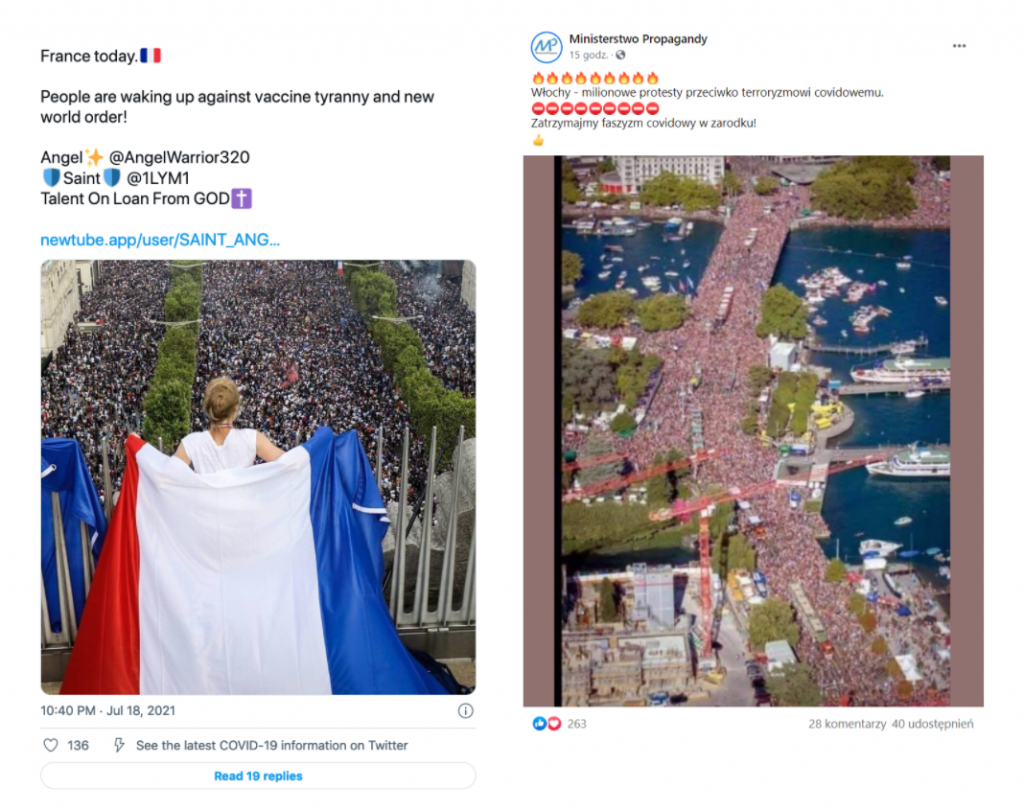
In November Austria experienced the same trend when the government, driven by skyrocketing numbers of infections, reintroduced a partial lockdown and became the first one to make vaccination against Covid-19 compulsory for most of its citizens.
In light of these examples we can expect that Italy – which during the first weeks of 2022 reinforced the use of the green pass and made vaccines mandatory for all workers older than 50 – will become again a hotbed for European disinformation in January 2022.
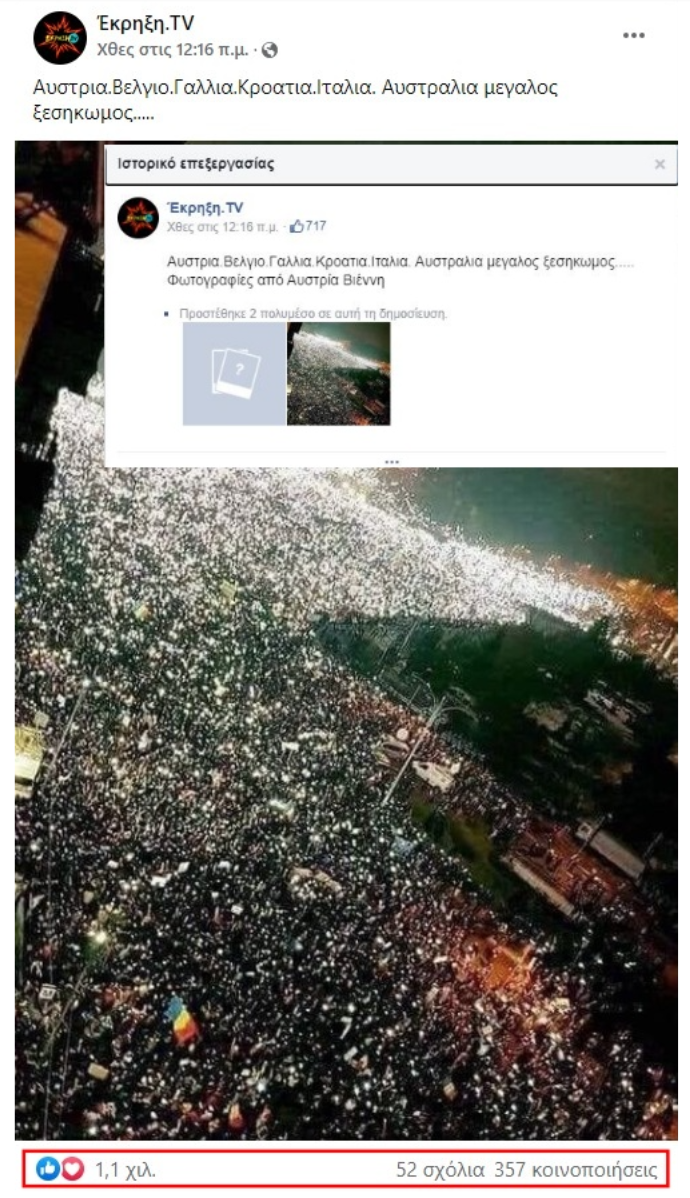
Alongside with geography it’s also possible to notice a thematic development of disinformation. An emblematic example is the false news that spread during the summer, when people generally go on vacation, claiming that airplane journeys could allegedly be harmful for vaccinated people (or unsafe due to sudden illnesses experienced by vaccinated pilots).
When the Delta variant started spreading, conspiracy theorists claimed that it had been caused by vaccines. And in September, when several vaccination campaigns physiologically slowed down, disinformation spread, claiming that anti-vax supporters had won their battle and governments were giving up on their efforts to vaccinate people. In December, when children’s vaccines and booster shots became available in many European countries, false news circulated about the alleged dangers of these measures.
Another phenomenon we can highlight is the ability of disinformation to exploit the complexity of the world we live in. A great example of this is the so-called “vaccines paradox”: when vaccination campaigns in EU countries started working at full speed and the majority of people got vaccinated, conspiracy theorists exploited official data – which correctly shows that the majority of infected or hospitalized people are vaccinated – to spread misleading messages.
This data in fact doesn’t tell us anything if taken without the proper context: we need to consider the incidence of infected and hospitalized people among vaccinated people, and not their absolute number. If we have 1,000 vaccinated people, and only 10 of them are hospitalized, their incidence is equal to 1%. If we have 10 non-vaccinated people and 5 of them are hospitalized, their incidence is equal to 50%, even though their absolute number is half the one of vaccinated people.
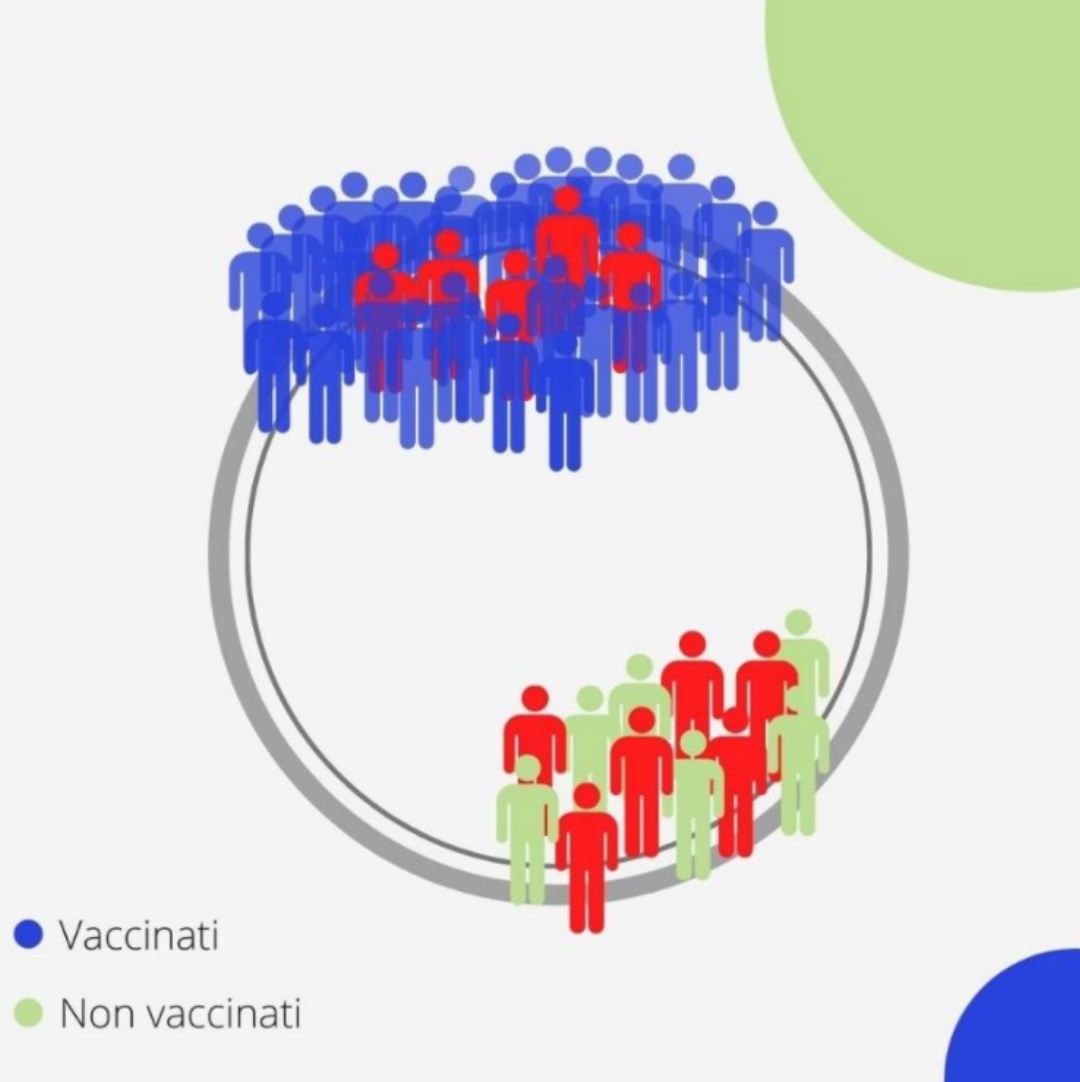
When it comes to these kinds of complexities, related to the domains of maths, statistics, medicine, and science, (it’s easy to recall the issue of pre-existing conditions, which led some newspaper to support the false claim according to which actual Covid-19 related deaths are but a small part of the official amount) disinformation has often built – not necessarily in bad faith – false news campaigns which sometimes lasted for months.
Here you can read the briefs published between July 2021 and January 2022, focused on the timeframe June-December 2021.
